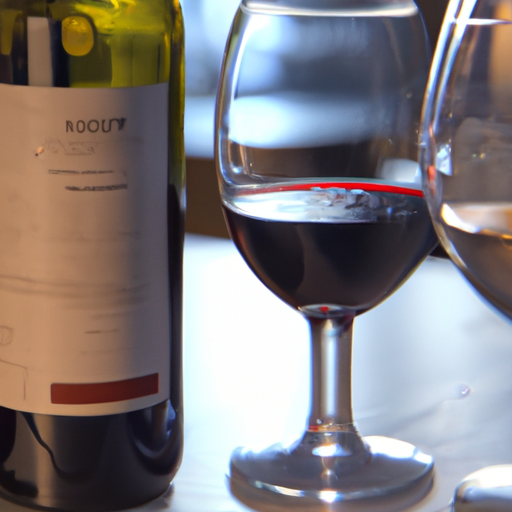
The Key Factors that Determine the Price Difference between Cheap and Expensive Wine
Decoding the Distinctions: Cheap vs. Expensive Wine
When it comes to wine, there is a wide range of options available to suit every budget. From inexpensive bottles to those with a hefty price tag, the price difference between cheap and expensive wine can be quite significant. But what exactly determines this price disparity? In this article, we will delve into the key factors that contribute to the varying costs of wine, helping you understand the distinctions between cheap and expensive options.
One of the primary factors that determine the price of wine is the quality of the grapes used in its production. Expensive wines often use grapes from specific vineyards or regions known for their exceptional quality. These grapes are carefully cultivated, hand-picked, and undergo rigorous quality control measures to ensure only the best make it into the final product. On the other hand, cheap wines may use grapes from less prestigious vineyards or regions, resulting in a lower quality product.
The aging process also plays a crucial role in the price difference between cheap and expensive wine. Expensive wines are often aged for longer periods, sometimes even several years, in oak barrels or stainless steel tanks. This extended aging allows the wine to develop complex flavors and aromas, resulting in a more refined and sophisticated taste. In contrast, cheap wines are typically aged for shorter periods or not at all, resulting in a simpler and less nuanced flavor profile.
Another factor that contributes to the price disparity is the production method. Expensive wines often employ traditional winemaking techniques, such as hand-harvesting, manual sorting of grapes, and small-batch production. These methods require more time, labor, and resources, ultimately driving up the cost of the final product. Cheap wines, on the other hand, are often produced using more automated and mass-production methods, which are more cost-effective but may compromise on quality.
The reputation and brand name of a winery also play a significant role in determining the price of wine. Well-established wineries with a long history of producing high-quality wines often command higher prices due to their reputation and brand recognition. These wineries have invested years, if not decades, in building a loyal customer base and establishing themselves as leaders in the industry. In contrast, lesser-known or newer wineries may offer cheaper wines as they strive to gain recognition and establish their brand.
Packaging and marketing also contribute to the price difference between cheap and expensive wine. Expensive wines often come in elegant and luxurious packaging, with attention to detail given to every aspect, from the label design to the bottle shape. These packaging choices are aimed at creating a premium and exclusive image for the wine, which justifies the higher price tag. Cheap wines, on the other hand, may opt for simpler and more cost-effective packaging, focusing more on affordability than aesthetics.
In conclusion, several key factors contribute to the price difference between cheap and expensive wine. These include the quality of grapes used, the aging process, production methods, winery reputation, and packaging and marketing choices. By understanding these distinctions, wine enthusiasts can make more informed choices when selecting a bottle, whether they are looking for an affordable option or a splurge-worthy indulgence. Ultimately, the price of wine is a reflection of the craftsmanship, quality, and experience that goes into its production, making each bottle a unique and distinct experience for the discerning palate.
Unveiling the Secrets: How to Identify Quality in Cheap and Expensive Wines

Decoding the Distinctions: Cheap vs. Expensive Wine
When it comes to wine, there is often a perception that the more expensive it is, the better the quality. However, this is not always the case. In fact, there are many cheap wines that can rival their expensive counterparts in terms of taste and quality. The key lies in understanding how to identify quality in both cheap and expensive wines.
One of the first things to consider when evaluating a wine is its origin. Expensive wines often come from renowned wine regions such as Bordeaux in France or Napa Valley in California. These regions have a long history of producing high-quality wines, and their reputation alone can drive up the price. On the other hand, cheap wines may come from lesser-known regions or even be produced as bulk wines. However, this does not mean that they are of inferior quality. In fact, some lesser-known regions can produce exceptional wines at a fraction of the cost.
Another important factor to consider is the grape variety used in the wine. Expensive wines often use premium grape varieties such as Cabernet Sauvignon or Chardonnay. These grapes are known for their complexity and depth of flavor, which can contribute to a higher price tag. Cheap wines, on the other hand, may use more common grape varieties such as Merlot or Sauvignon Blanc. While these grapes may not have the same prestige as their premium counterparts, they can still produce delicious wines when handled with care.
The aging process also plays a significant role in the quality of a wine. Expensive wines are often aged in oak barrels for an extended period, allowing them to develop complex flavors and aromas. This aging process adds to the cost of the wine, as oak barrels are expensive and take up valuable storage space. Cheap wines, on the other hand, may not undergo the same aging process. Instead, they may be aged in stainless steel tanks or even bottled and sold immediately. While this may result in a less complex wine, it does not necessarily mean that it is of lower quality. Some wines are meant to be enjoyed young and fresh, without the need for extensive aging.
Tasting the wine is, of course, the ultimate test of its quality. Expensive wines often exhibit a greater depth of flavor and complexity. They may have layers of fruit, earth, and spice that unfold on the palate. Cheap wines, on the other hand, may be simpler in flavor but can still be enjoyable. They may have bright fruit flavors and a refreshing acidity that makes them perfect for everyday drinking. Ultimately, the taste of a wine is subjective, and what one person considers high quality, another may not.
In conclusion, the price of a wine does not always determine its quality. While expensive wines often come from renowned regions, use premium grape varieties, and undergo extensive aging, there are many cheap wines that can rival their expensive counterparts. By understanding the factors that contribute to the quality of a wine, such as origin, grape variety, aging process, and taste, one can make informed decisions when choosing a bottle. Whether it’s a cheap or expensive wine, the most important thing is to find one that you enjoy and that suits your personal taste preferences. Cheers!
Debunking Myths: Exploring the Truths and Misconceptions about Cheap and Expensive Wine
Decoding the Distinctions: Cheap vs. Expensive Wine
Debunking Myths: Exploring the Truths and Misconceptions about Cheap and Expensive Wine
When it comes to wine, there is often a perception that the more expensive it is, the better it must be. However, this is not always the case. In fact, there are many factors that contribute to the price of a bottle of wine, and it is important to understand these distinctions in order to make an informed decision about what to purchase.
One common misconception is that cheap wine is of lower quality than expensive wine. While it is true that some inexpensive wines may not be as refined or complex as their pricier counterparts, this does not mean that they are inherently bad. In fact, there are many affordable wines that offer great value for money and can be enjoyed just as much as their more expensive counterparts.
One of the main factors that contribute to the price of a bottle of wine is the cost of production. Expensive wines often come from vineyards that have higher production costs, such as those located in prestigious wine regions or those that use labor-intensive farming practices. These factors can drive up the price of the final product, but they do not necessarily guarantee a better tasting wine.
Another factor to consider is the age of the wine. Older wines are often more expensive because they require more time and care to produce. However, this does not mean that all older wines are superior to younger ones. In fact, some wines are meant to be consumed when they are young and fresh, while others benefit from aging. It ultimately comes down to personal preference and the characteristics you enjoy in a wine.
Furthermore, the price of a bottle of wine can also be influenced by marketing and branding. Some wineries invest heavily in marketing and packaging, which can drive up the cost of their products. This does not necessarily mean that the wine inside the bottle is of higher quality, but rather that the winery has invested in creating a certain image or perception around their brand.
It is also important to note that taste is subjective. What one person may consider a great wine, another may find unappealing. This is why it is important to trust your own palate and experiment with different wines to find what you enjoy. Expensive wines may be highly rated by critics, but if they do not align with your personal taste preferences, then they may not be worth the higher price tag.
In conclusion, the price of a bottle of wine does not always reflect its quality or taste. While some expensive wines may offer a more refined and complex experience, there are also many affordable options that can be just as enjoyable. Factors such as production costs, age, marketing, and personal taste all play a role in determining the price of a bottle of wine. Ultimately, it is important to explore and experiment with different wines to find what suits your own palate and preferences. So, the next time you are faced with the choice between a cheap and expensive bottle of wine, remember that price is not the only indicator of quality.






